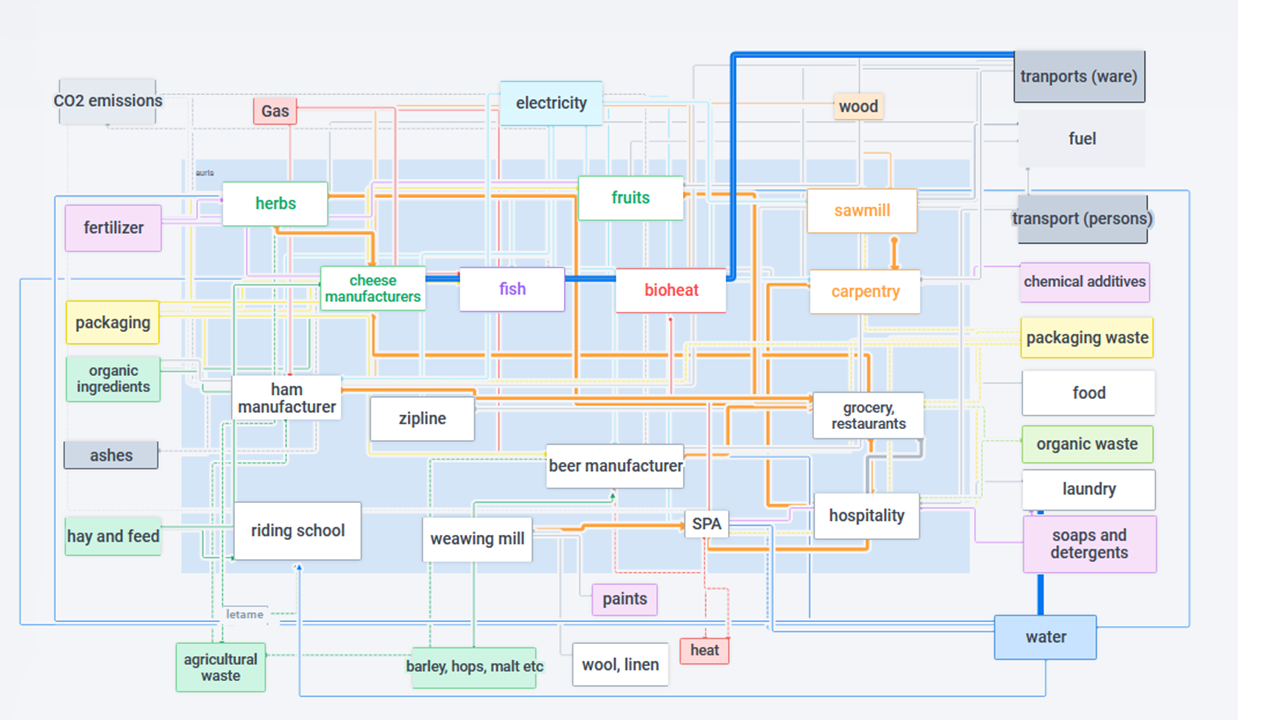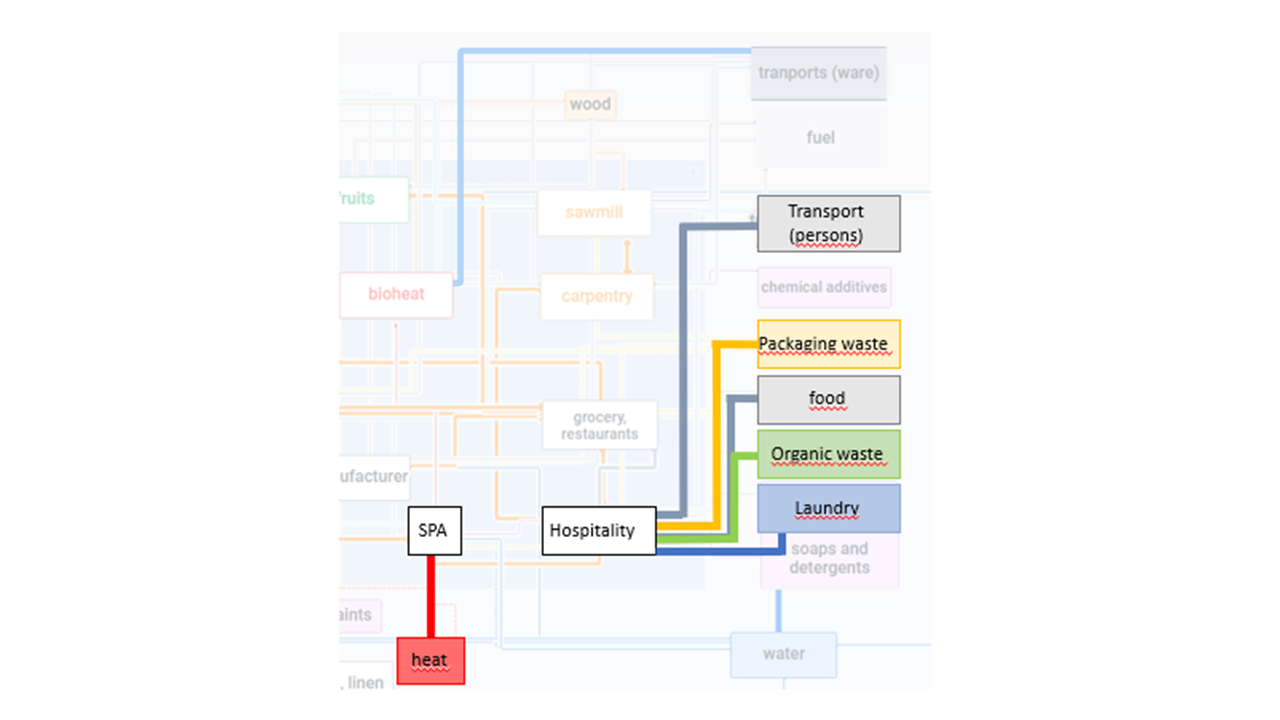Ecosystem mapping for circular economy
Why ecosystems?
Circular economy aims to design out waste and pollution, keep products and materials in use, and regenerate natural systems (Ellen McArthur Foundation).
Circularity is a system change, not doable for single products or companies: you need suppliers able to use recycled materials, partners for reverse logistics, customers willing to repair or return the product… Transitioning to a circular economy requires innovation embracing whole ecosystems. Therefore, the first step towards a circular economy is to understand the ecosystem in which you operate.

What is an ecosystem map?
An ecosystem is set of actors that contribute to a collective outcome. The actors share a common (circular) value proposition, interact in the value creation and get a fair value capture.
An ecosystem map (actors map, ecology map) describes all the entities, flows and relationships that characterize the surrounding ecosystem.
There are many ways to build and visualize an ecosystem map, all based on common main steps: first display all actors involved, then connect them based on the value they exchange. You can include only physical resources, or extend to information and money, or intangible assets.
You can use fancy visualization tools or work with paper and pencils, the effect will be same: you will understand the system in which you operate, see how the actors interact, uncover existing gaps and identify opportunities for synergies.
Case study: mapping the touristic ecosystem in a small alpine community
In this work we mapped the ecosystem around the touristic activities in Sauris, a small alpine village in the northern-east corner of Italy.The community of Sauris has a long tradition of sustainable tourism and a strong sense of belongings, derived by the far origins as settlers from a foreign region and by the long isolation. Already in the early '80 they defined a common strategy to strengthen the community based on sustainable tourism and handcraft activities. To many extends this common strategy was already a definition of the ecosystem, with a common value proposition (make the community more liveable and stop the migration of its members) and a fair value capture (based on small players and kept within the community), but the relationships and possible synergies between actors were left in the background. To fill this gap and enable and enable a further step towards a sustainable ecosystem we developed a high-level ecosystem map with the material and energy flows.

The map helped to focus and structure the analysis: Which flows can be closed locally? Which can be narrowed, or slowed? Which ones are in our hands?
The analysis was quickly restricted to the hospitality, and led to few main ideas:
1) act on transport solutions for persons (narrow the flow), for example on demand shuttle bus among points with optimized route and times, in order to reduce emissions, noise and parking space;
2) reduce food waste and food packaging (waste) related to tourists (narrow the flow), for example with a zero package minimarket;
3) use the excess heat from the heating plant for new activities (greenhouse) (close the flow)
4) use heat and water from the spa for a small local laundry, to avoid long transfers and plastic foils (close and narrow)
All in all the ecosystem map revealed unsuspected synergies and led to a fast focus on few topics. How to implement these ideas, or which ones are viable, will be part of future work.

Want to know more about this project and the method behind? Get in touch!
References:
Konietzko, Jan ; Bocken, Nancy ; Hultink, Erik Jan. / Circular ecosystem innovation : An initial set of principles. In: Journal of Cleaner Production. 2020 ; Vol. 253.
https://servicedesigntools.org/tools/ecosystem-map
Sauris – Sauris – Zahre

